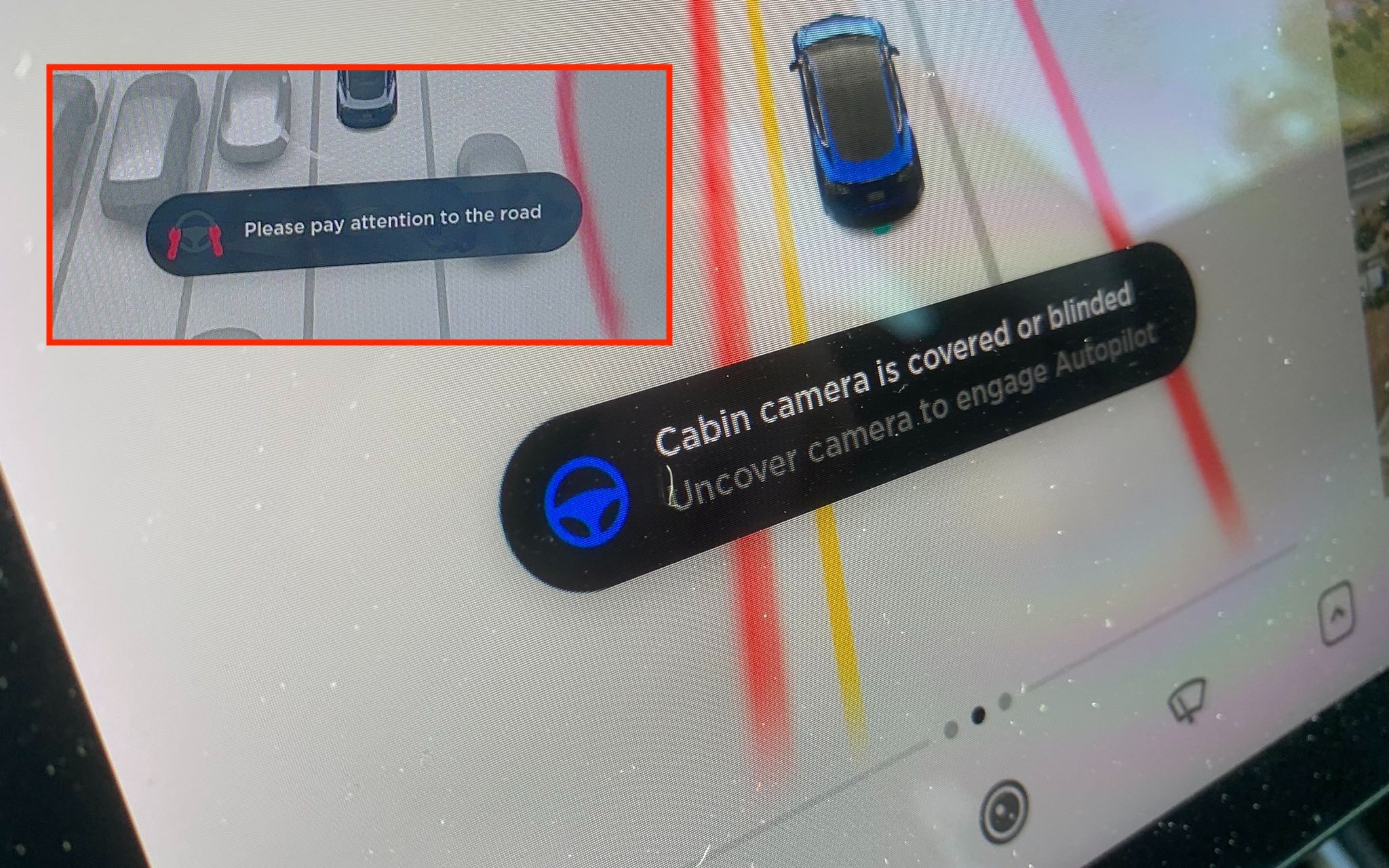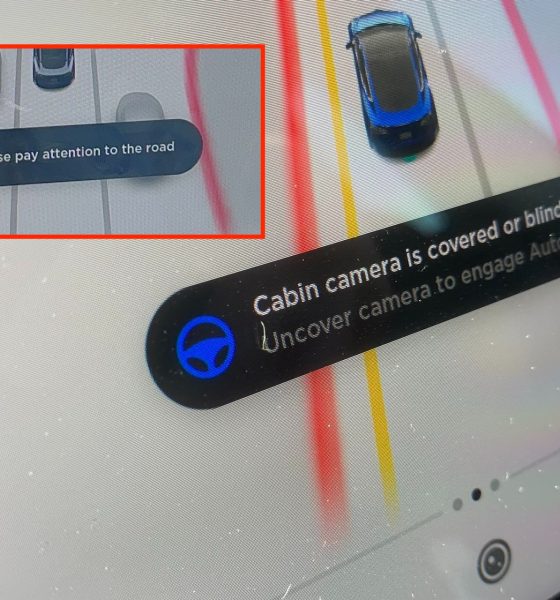

News
Tesla gets scathing criticism from NTSB Chair over FSD branding, driver monitoring: “It’s not enough”
In a recent appearance at CNBC’s Squawk Box, NTSB Chairwoman Jennifer Homendy doubled down on her criticism of Tesla’s driver-assist systems. The head of the US National Transportation Safety Board’s recent comments came just a day after Homendy sent a letter to Tesla CEO Elon Musk about why the EV maker has not responded to recommendations issued by the NTSB years ago.
Back in 2017, the NTSB issued two safety recommendations to Tesla following its investigation of a fatal Autopilot crash. The agency concluded that Autopilot did not effectively monitor the driver’s attention on the road, and thus, it recommended that Tesla should limit Autopilot. The NTSB also recommended that Tesla should implement better ways to determine a driver’s engagement.
Tesla did not respond to the NTSB directly, but it did roll out numerous safety improvements to Autopilot in the form of more stringent driver monitoring checks, and more recently, the use of in-cabin cameras to determine if a driver is paying attention to the road. Yet in her appearance at CNBC’s Squawk Box, and even with the host highlighting a comment from CEO Elon Musk stating that FSD Beta users must be extremely vigilant at all times, Homendy was firm in her stance that Tesla was not doing enough.
“That’s not enough. It’s clear that if you are marketing something as full self-driving and it is not full self-driving and people are misusing the vehicles and the technology that you have a design flaw, and you have to prevent that misuse. And part of that is how you talk about your technology. It’s not full self-driving. Unless you’re saying the driver is actually driving the car. Which in this case, it isn’t full self-driving technology. It’s misleading,” the NTSB head said.
What is rather interesting was that the NTSB’s initial recommendations for Tesla from four years ago were for Autopilot’s driver monitoring systems. This has already been addressed by Tesla through a series of over-the-air updates, from higher frequencies of visual and audible alerts to the use of in-cabin cameras. Homendy’s recent issues also seem focused on the Full Self-Driving suite, which is not the same as the FSD Beta that is being expanded to a select group of Tesla owners today. FSD Beta is only given to drivers with high safety scores, while Full Self Driving is currently being sold as a bundle of features that could be purchased today, such as Summon and Navigate on Autopilot with Automatic Lane Changes.
What is even more interesting is that currently, there are over 38,000 Americans who die in automobile crashes per year, as per data from the National Highway Traffic Safety Administration (NHTSA). The CDC further notes that an additional 3 million people are injured or disabled annually as a result of automobile crashes. This is the issue that Tesla is trying to address with its Autopilot and FSD programs, and this is a rather grim statistic that is seemingly being ignored by the NTSB head so far.
Check out the NTSB head’s segment in CNBC’s Squawk Box in the video below.
Don’t hesitate to contact us with news tips. Just send a message to tips@teslarati.com to give us a heads up.

News
Tesla FSD fleet is nearing 7 billion total miles, including 2.5 billion city miles
As can be seen on Tesla’s official FSD webpage, vehicles equipped with the system have now navigated over 6.99 billion miles.

Tesla’s Full Self-Driving (Supervised) fleet is closing in on almost 7 billion total miles driven, as per data posted by the company on its official FSD webpage.
These figures hint at the massive scale of data fueling Tesla’s rapid FSD improvements, which have been quite notable as of late.
FSD mileage milestones
As can be seen on Tesla’s official FSD webpage, vehicles equipped with the system have now navigated over 6.99 billion miles. Tesla owner and avid FSD tester Whole Mars Catalog also shared a screenshot indicating that from the nearly 7 billion miles traveled by the FSD fleet, more than 2.5 billion miles were driven inside cities.
City miles are particularly valuable for complex urban scenarios like unprotected turns, pedestrian interactions, and traffic lights. This is also the difference-maker for FSD, as only complex solutions, such as Waymo’s self-driving taxis, operate similarly on inner-city streets. And even then, incidents such as the San Francisco blackouts have proven challenging for sensor-rich vehicles like Waymos.
Tesla’s data edge
Tesla has a number of advantages in the autonomous vehicle sector, one of which is the size of its fleet and the number of vehicles training FSD on real-world roads. Tesla’s nearly 7 billion FSD miles then allow the company to roll out updates that make its vehicles behave like they are being driven by experienced drivers, even if they are operating on their own.
So notable are Tesla’s improvements to FSD that NVIDIA Director of Robotics Jim Fan, after experiencing FSD v14, noted that the system is the first AI that passes what he described as a “Physical Turing Test.”
“Despite knowing exactly how robot learning works, I still find it magical watching the steering wheel turn by itself. First it feels surreal, next it becomes routine. Then, like the smartphone, taking it away actively hurts. This is how humanity gets rewired and glued to god-like technologies,” Fan wrote in a post on X.
News
Tesla starts showing how FSD will change lives in Europe
Local officials tested the system on narrow country roads and were impressed by FSD’s smooth, human-like driving, with some calling the service a game-changer for everyday life in areas that are far from urban centers.

Tesla has launched Europe’s first public shuttle service using Full Self-Driving (Supervised) in the rural Eifelkreis Bitburg-Prüm region of Germany, demonstrating how the technology can restore independence and mobility for people who struggle with limited transport options.
Local officials tested the system on narrow country roads and were impressed by FSD’s smooth, human-like driving, with some calling the service a game-changer for everyday life in areas that are far from urban centers.
Officials see real impact on rural residents
Arzfeld Mayor Johannes Kuhl and District Administrator Andreas Kruppert personally tested the Tesla shuttle service. This allowed them to see just how well FSD navigated winding lanes and rural roads confidently. Kruppert said, “Autonomous driving sounds like science fiction to many, but we simply see here that it works totally well in rural regions too.” Kuhl, for his part, also noted that FSD “feels like a very experienced driver.”
The pilot complements the area’s “Citizen Bus” program, which provides on-demand rides for elderly residents who can no longer drive themselves. Tesla Europe shared a video of a demonstration of the service, highlighting how FSD gives people their freedom back, even in places where public transport is not as prevalent.
What the Ministry for Economic Affairs and Transport says
Rhineland-Palatinate’s Minister Daniela Schmitt supported the project, praising the collaboration that made this “first of its kind in Europe” possible. As per the ministry, the rural rollout for the service shows FSD’s potential beyond major cities, and it delivers tangible benefits like grocery runs, doctor visits, and social connections for isolated residents.
“Reliable and flexible mobility is especially vital in rural areas. With the launch of a shuttle service using self-driving vehicles (FSD supervised) by Tesla in the Eifelkreis Bitburg-Prüm, an innovative pilot project is now getting underway that complements local community bus services. It is the first project of its kind in Europe.
“The result is a real gain for rural mobility: greater accessibility, more flexibility and tangible benefits for everyday life. A strong signal for innovation, cooperation and future-oriented mobility beyond urban centers,” the ministry wrote in a LinkedIn post.
News
Tesla China quietly posts Robotaxi-related job listing
Tesla China is currently seeking a Low Voltage Electrical Engineer to work on circuit board design for the company’s autonomous vehicles.

Tesla has posted a new job listing in Shanghai explicitly tied to its Robotaxi program, fueling speculation that the company is preparing to launch its dedicated autonomous ride-hailing service in China.
As noted in the listing, Tesla China is currently seeking a Low Voltage Electrical Engineer to work on circuit board design for the company’s autonomous vehicles.
Robotaxi-specific role
The listing, which was shared on social media platform X by industry watcher @tslaming, suggested that Tesla China is looking to fill the role urgently. The job listing itself specifically mentions that the person hired for the role will be working on the Low Voltage Hardware team, which would design the circuit boards that would serve as the nervous system of the Robotaxi.
Key tasks for the role, as indicated in the job listing, include collaboration with PCB layout, firmware, mechanical, program management, and validation teams, among other responsibilities. The role is based in Shanghai.
China Robotaxi launch
China represents a massive potential market for robotaxis, with its dense urban centers and supportive policies in select cities. Tesla has limited permission to roll out FSD in the country, though despite this, its vehicles have been hailed as among the best in the market when it comes to autonomous features. So far, at least, it appears that China supports Tesla’s FSD and Robotaxi rollout.
This was hinted at in November, when Tesla brought the Cybercab to the 8th China International Import Expo (CIIE) in Shanghai, marking the first time that the autonomous two-seater was brought to the Asia-Pacific region. The vehicle, despite not having a release date in China, received a significant amount of interest among the event’s attendees.








